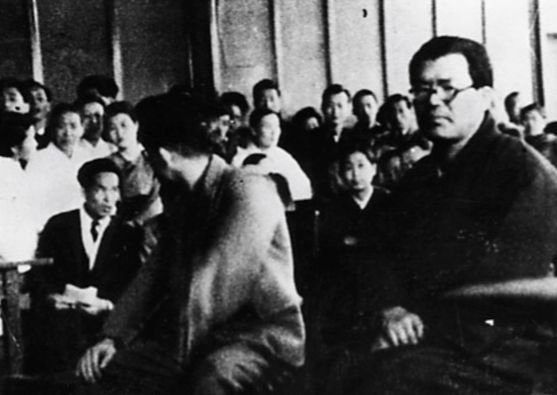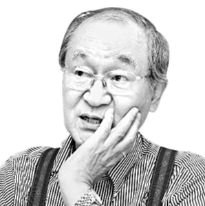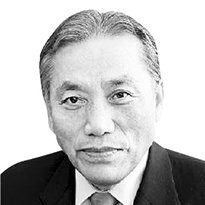
레바논에는 이슬람교만 존재하는 것이 아니다. 레바논에는 이슬람 다음으로 비중이 높은 종교는 유태교이고 그 다음이 기독교다. 그러나 레바논의 종교적 정서 상 무슬림과 유태인은 상극이고 사이가 좋지 않은 반면, 기독교는 인접국인 시리아와 마찬가지로 인정되고 있는 편이다. 레바논의 기독교의 대부분은 마론 기독교(Maronite Church)로 동방 가톨릭 교회의 한 일파로 알려지고 있다. 마론 기독교의 공식 명칭은 안티오키아의 시리아 마론 교회(ܥܕܬܐ ܣܘܪܝܝܬܐ ܡܪܘܢܝܬܐ ܕܐܢܛܝܘܟܝܐ)이며 안티오키아 총대주교를 수장으로 하고 있다. 현재 안타키아는 터키 영내에 있기 때문에 단절된 상태이고 그런 관계로 주교좌는 레바논 베이루트에 존재하고 있다. 마론 기독교의 기원은 5세기경 수도자이자 레바논 지역의 주교인 성 마론(St. Maron)에서 찾을 수 있다. 이 교단은 오늘날 레바논과 시리아에서 가장 유력한 교단이며 레반트 지역과 키프로스에 주로 분포하고 있다. 레바논과 달리 키프로스의 마론 기독교 신자들은 독자적인 아랍어 방언을 사용하고 있다.
마론 교회는 로마 카톨릭의 입장에서도 굉장히 중요한 종파 중에 하나로 본다. 이들은 아람어를 비롯한 초대 교회들이 갖고 있는 흔적을 그대로 간직한 일파이기 때문에 역사적으로도 오래되었다. 이들은 지리적인 고립성으로 인해 로마 카톨릭과는 잠시 교류가 되지 않았었다. 그러나 교황과의 종교적 일치가 공식적으로는 끊어진 바 없는 서로마 카톨릭 교회와 대개 일치하고 있다. 로마 교회의 입장에서는 동방 교회 전례를 연구하는 데 학술적인 도움이 되는 교회이기 때문에 그들에 대한 자치권을 최대한 인정해 주고 있다. 마론 교회에서 스스로 안티오키아 총대주교를 선출하면 교황이 추인해주는 식으로 임명하는 것이 대표적인 사례라 볼 수 있다. 최초의 마론 교회는 하나의 독립된 교회가 아니었고 일종의 종교적 운동에서 출발한 단체였다. 마론 교회 측의 주장에 의하면 4세기 교부 성 요한 크리소스토모(John Chrysostom, 354~407) 총대주교와 같은 시대 인물인 성 마론에게서 유래하고 있다. 마론은 안티오키아를 떠나 은수생활을 하러 오론테스 강 지역으로 들어간 은수자였던 인물이다.
오론테스 강은 현재 레바논에서 발원하여 시리아를 거쳐 흐르는 강이다. 이 지역에 은수 생활을 하던 마론에게도 많은 추종자들이 생겨났고 그가 사망하자 제자들은 그를 기억하면서 수도원을 세우고 성 마론의 이론을 두고 토론을 벌였는데 이것이 마론주의의 시작이다. 그러나 451년 칼케돈 공의회로 인한 교회의 분열로 안티오키아 교회는 알렉산드리아, 예루살렘 교회 및 다른 동방 교회들과 함께 칼케돈 신경(The Definition of Chalcedon)을 거부하여 콘스탄티노플의 정교회와 로마 카톨릭으로부터 탈퇴하고 나갔다. 이를 두고 카톨릭과 정교회로서는 이단을 축출했다고 하는데 이들은 카톨릭과 정교회에 반발하여 스스로 나간 것 뿐이다. 하지만 당시 마론주의에 속한 공동체들은 칼케돈 신경을 지지했다. 다만 이후 칼케돈파와 단성론의 절충안인 단의론을 지지했다. 결국 시리아에서 다수파인 비(非) 칼케돈파로부터 탄압을 받아 은둔하는 형태의 수도 공동체로 자리 잡았다. 다만 마론주의 종파들이 시리아에서 레바논으로 7~10세기 사이에 이주했는데 그들의 이주 원인이 아라비아인의 공격 때문이었는지, 혹은 비잔틴 제국의 박해, 아니면 단성론자들의 박해 등과 관련해서는 이견이 분분한 편이다.
이러한 특성과 지리적인 고립성으로 인해 마론주의의 존재가 최소 100년 동안 사람들의 기억 속에서 잊혀졌다는 것이다. 당시 약 100~400년 동안 로마 카톨릭의 기억에서 사라졌던 마론주의는 1099년에 들어서야 제1차 십자군 원정 당시 서유럽 군대가 레바논을 통과할 때 이들을 맞이하러 나옴으로 인해 그 존재가다시 카톨릭 세계에 다시 알려졌는데 이 때 서유럽 카톨릭 세계와 관계를 맺게 된다. 그리하여 1182년 마론주의 종파들은 교황과의 일치할 것을 맹세하기에 이른다. 그에 화답하여 십자군 전쟁에 기여한 마론주의 종파에게 로마 카톨릭이 1182년에 그 정통성을 인정해 주어 이들은 카톨릭 교회의 일원이 되었다. 제1차 십자군 원정 이후에도 마론주의자들은 이집트 맘루크 왕조 등으로부터 지속적인 탄압을 받았지만 로마 카톨릭 및 유럽 국가들과 관계를 계속 유지했으며 동부 지중해 연안에서 카톨릭 세력을 상징하는 역할을 했다. 1516년 라테라노 공의회에는 마론주의 주교들이 직접 참석하게 되고 1584년에는 마론주의 신자들이 신학 대학을 세우면서 이어 수도원도 세우게 된다.
아라비아인들에 대한 전도를 위해 성경 전권을 아랍어로 번역한 것은 마론주의 신도들의 도움이 컸다. 중세 시대 성경의 아랍어 번역은 성경 전 권을 일괄적으로 번역하는 것이 아니라 필요한 부분만 발췌하여 번역하는 경우가 많아서 번역 전반의 완성도가 떨어진다는 단점이 있었고 중동의 기독교인들은 콥트어 혹은 아람어로 된 성경 만을 사용해야 하는 불편함이 있었다. 17세기 초 다마스쿠스의 마론파 대주교 사르키스 알 루지(Sarkis al-Ruzi)는 중세 시대부터 이루어진 성경의 단편적인 번역본 자료들을 모아 로마로 보냈으며 마론주의 성직자들의 도움으로 인해 로마에서 1671년 성경 전 권이 아랍어로 번역되어 출간되었다. 이러한 마론주의 교회의 중심 지역이 레바논이었기 때문에 오늘날에도 레바논 기독교인들 가운데는 마론주의 카톨릭 신자들이 다수를 차지하고 있다. 마론주의 카톨릭 신자들은 레바논 이 외에도 시리아와 이스라엘, 키프로스, 미국, 캐나다, 호주, 브라질 등지에도 분포해 있는데 전체 신자 수는 300만이 조금 넘는 것으로 파악되고 있다.
원래 레바논 지역은 소(小) 레바논이라 불리며 오스만투르크 제국에게서 자치권을 얻은 마론주의 기독교인들의 거주지였다. 레바논 산맥의 북부는 마론주의 교도들이 거주하고 레바논 산맥 남부는 드루이즈 신도들이 무슬림들의 탄압을 피해 거주하고 있었다. 따라서 거주하는 영역을 두고 마론주의와 드루이즈 사이에 무력 충돌이 자주 발생했다. 1860년대 드루이즈교도들이 마론주의 신도 1만여 명을 학살하면서 농민들을 잃어버린 레바논 내에서 기근이 발생하자 마론주의 신도들은 레바논 산맥에서 내려와 시리아와 이집트 등의 도회지로 이주하기 시작했다. 그러나 제국주의 시절, 프랑스가 이 지역을 식민 통치한 이후에는 소(小) 레바논에서 독립 시위가 발생하자 종파 간의 대립을 조장해서 통치하기 쉽게 하기 위해 시리아 영토의 일부를 레바논에 편입시켰다. 이에 기존의 소(小) 레바논과 이들 지역을 합해 대(大)레바논이라 부르는 현재의 레바논이 탄생하게 되었다. 1932년에는 기독교인의 비율은 51%로 떨어지고 무슬림의 비율이 49%까지 올라갔는데 기독교인들이 대거 해외로 유출되고 난민을 받는 등의 결과로 그리스도교-이슬람 인구가 역전되는 사태가 발생했다.
다만 51%라는 기독교인의 비율은 기독교인들을 지원해 레바논에 대한 영향력을 키우고자 했던 프랑스 위임 통치 정부가 1932년에 조사 당시 외국에 있는 레바논 기독교인들까지 포함시켜 통계를 조작해서 나타낸 것이다. 그 결과 당시 레바논 인구 793,226명 중 기독교인이 396,746명으로 여타 집단보다 266명 앞선 것으로 나타났다. 이는 기독교인과 무슬림들과 신도 비율이 같거나 무슬림들 숫자가 조금 우세한 것이었다. 프랑스 당국은 이와 같이 조작된 결과로 레바논 의회의 의석 배분에 있어 기독교인과 무슬림들의 비율을 6대 5 정도로 설정하였고 이는 독립 후에 그대로 적용되어 사실 5보다는 6에 가까웠던 무슬림들의 상대적 박탈감으로 인해 레바논 내전이 일어나게 된 원인이 되었다. 1,000년 이상 공존하던 레바논의 아라비아인들이 십자군 전쟁 이후 최초로 종교를 두고 서로 대립하게 된 것이다. 이후 민족주의를 접한 마론주의 신도들은 자신들을 고대 페니키아인의 직계 후예라는 정체성을 가지게 되었으며 시리아 바트당의 범 아라비아주의 성향의 영향을 받던 다른 아라비아계 그리스도인들과 다른 정체성을 가지게 되었다.
1982년 마론주의 민병대들은 레바논과 팔레스타인 내 분열을 노리는 이스라엘의 지원을 받게 된다. 이들은 레바논에서 팔레스타인 난민촌을 공격해 대대적인 학살을 자행했다. 따라서 마론주의자들은 세계적인 비난을 받았고 그러한 비난으로 인해 상당한 정치적 권력을 타 종파들에게 내주어야 했는데 시리아의 지원을 받는 헤즈볼라의 집권을 저지하려 했음에도 불구하고 결국 헤즈볼라가 레바논 여당이 되었다. 이는 마론주의의 실책이 불러들인 자충수라는 평이 많았다. 다만 21세기 들어 친시리아계 정파인 3월 8일 동맹(Islam Amal)의 제1 정파는 자유애국운동(التيار الوطني الحر)으로 정당을 세우고 정치에 나섰으며 반시리아파인 3월 14일 동맹의 제1 정파는 수니파의 지지세가 강한 미래운동(تيار المستقبل)으로 정당을 세우고 정치에 나서 서로 대립하는 면을 보였다. 그런데 워낙 마론주의파의 정계에서 입김이 강하다보니 레바논에서는 대통령이 마론주의 카톨릭 신자여야 한다는 불문율이 존재하고 있다. 이는 종교 간 권력 분점을 위해 만든 것이지만 이스라엘의 지원을 받고 헤즈볼라를 적극 방해하고 있다는 점에서 레바논 내, 또 다른 종교 내전이 벌어질 가능성은 항상 도사리고 있는 것이 현실이다.
*필자/ 정길선.
노바토포스 회원, 역사학자, 고고인류학자, 칼럼니스트, 러시아 과학아카데미 유라시아 고고인류학연구소 연구교수.
*아래는 위 기사를 '구글 번역'으로 번역한 영문 기사의 [전문]입니다. '구글번역'은 이해도 높이기를 위해 노력하고 있습니다. 영문 번역에 오류가 있을 수 있음을 전제로 합니다.<*The following is [the full text] of the English article translated by 'Google Translate'. 'Google Translate' is working hard to improve understanding. It is assumed that there may be errors in the English translation.>
Maronite Christianity, a Christian sect with a different identity from Hezbollah in Lebanon
Jeong Gil-seon Columnist
Lebanon is not the only religion that exists. The second most important religion in Lebanon after Islam is Judaism, followed by Christianity. However, while Muslims and Jews are at odds and do not get along well in Lebanon’s religious sentiment, Christianity is accepted, just like in neighboring Syria. Most of Lebanon’s Christians are Maronite Christians, known as a branch of the Eastern Catholic Church. The official name of Maronite Christianity is the Syrian Maronite Church of Antioch (ܥܕܬܐ ܣܘܪܝܝܬܐ ܡܪܘܢܝܬܐ ܕܐܢܛܝܘܟܝܐ), and it is headed by the Patriarch of Antioch. Currently, Antakya is in Turkish territory and is thus cut off, and as a result, the episcopal see exists in Beirut, Lebanon. The origin of Maronite Christianity can be traced to St. Maron, a monk and bishop of Lebanon in the 5th century. This sect is the most powerful sect in Lebanon and Syria today, and is mainly distributed in the Levant and Cyprus. Unlike Lebanon, the Maronite Christians in Cyprus use their own Arabic dialect. The Maronite Church is considered one of the most important sects from the Roman Catholic perspective. They are a sect that has preserved the traces of the early churches, including the Aramaic language, and so they are historically old. Due to their geographical isolation, they did not interact with the Roman Catholic Church for a while. However, they are mostly in agreement with the Western Roman Catholic Church, which has never officially broken religious communion with the Pope. From the perspective of the Roman Church, they are a church that is of academic help in studying the liturgy of the Eastern Church, so they are given maximum autonomy. A typical example is the Maronite Church electing its own Patriarch of Antioch, who is then confirmed by the Pope. The first Maronite Church was not an independent church, but rather a group that started as a religious movement. According to the Maronite Church, it originated from Saint Maron, a contemporary of the 4th-century Patriarch John Chrysostom (354-407). Maron was a hermit who left Antioch and went to the Orontes River region to live a life of seclusion. The Orontes River is a river that originates in present-day Lebanon and flows through Syria. Maron, who lived a life of seclusion in this region, gained many followers, and after his death, his disciples built a monastery in his memory and debated the theories of Saint Maron, which was the beginning of Maronism. However, due to the division of the church caused by the Council of Chalcedon in 451, the Antiochian Church, along with the Church of Alexandria, the Church of Jerusalem, and other Eastern Churches, rejected the Definition of Chalcedon and withdrew from the Orthodox Church of Constantinople and the Roman Catholic Church. The Catholics and the Orthodox claim that this was an expulsion of heresy, but they simply withdrew on their own in opposition to the Catholics and the Orthodox. However, the communities belonging to the Maronites at the time supported the Chalcedonian Creed. However, they later supported Monophysitism, a compromise between the Chalcedonians and Monophysitism. Eventually, they were oppressed by the majority non-Chalcedonians in Syria and settled as a hermit-like monastic community. However, there is disagreement as to whether the Maronite sect migrated from Syria to Lebanon between the 7th and 10th centuries, or whether the migration was due to attacks by the Arabs, persecution by the Byzantine Empire, or persecution by Monophysitism. Due to these characteristics and geographical isolation, the existence of Maronism was forgotten in people's memories for at least 100 years. Maronism, which had disappeared from the memory of Roman Catholicism for about 100 to 400 years, was not until 1099 that its existence was known to the Catholic world again when it came out to greet the Western European army passing through Lebanon during the First Crusade. At this time, it established relations with the Western European Catholic world. Thus, in 1182, the Maronite sect swore unity with the Pope. In response, the Roman Catholic Church recognized the legitimacy of the Maronite sect that contributed to the Crusades in 1182, and they became part of the Catholic Church. Even after the First Crusade, the Maronites continued to be oppressed by the Mamluk dynasty of Egypt and others, but they continued to maintain relations with Roman Catholicism and European countries and played a role as a symbol of Catholic power in the eastern Mediterranean. In 1516, Maronite bishops attended the Lateran Council in person, and in 1584, Maronite believers established a theological college and then a monastery.
The Maronite believers helped greatly in translating the entire Bible into Arabic for the purpose of evangelizing Arabs. In the Middle Ages, the Arabic translation of the Bible was often done by extracting only necessary parts rather than translating the entire Bible, which led to a lack of completeness in the overall translation, and Christians in the Middle East had to use only the Bible in Coptic or Aramaic, which was inconvenient. In the early 17th century, the Maronite Archbishop of Damascus, Sarkis al-Ruzi, collected fragmentary translations of the Bible from the Middle Ages and sent them to Rome, where the entire Bible was translated into Arabic and published in Rome in 1671 with the help of Maronite clergy. Since the center of the Maronite Church was Lebanon, even today, the majority of Lebanese Christians are Maronite Catholics. Maronite Catholics are distributed in Syria, Israel, Cyprus, the United States, Canada, Australia, Brazil, etc., in addition to Lebanon, and the total number of believers is estimated to be slightly over 3 million. Originally, the Lebanon region was called Little Lebanon and was the home of Maronite Christians who gained autonomy from the Ottoman Empire. The northern part of the Lebanon Mountains was inhabited by Maronites, and the southern part was inhabited by Druids who were fleeing Muslim oppression. As a result, armed conflicts between Maronites and Druids frequently occurred over the areas in which they resided. In the 1860s, when the Druids massacred 10,000 Maronite believers and lost farmers, a famine occurred in Lebanon, and Maronite believers began to migrate from the Lebanon Mountains to cities such as Syria and Egypt. However, during the imperialist era, after France colonized the region, when independence protests broke out in Little Lebanon, they annexed part of Syrian territory to Lebanon in order to promote sectarian conflict and make it easier to rule. As a result, the existing Little Lebanon and these regions were combined to create the current Lebanon called Greater Lebanon. In 1932, the percentage of Christians fell to 51% and the percentage of Muslims rose to 49%, but as a result of Christians leaving the country in large numbers and accepting refugees, the Christian-Muslim population reversed.
However, the percentage of Christians, 51%, was manipulated by the French Mandate government, which wanted to increase its influence over Lebanon by supporting Christians, including Lebanese Christians living abroad at the time of the 1932 survey. As a result, out of the Lebanese population of 793,226 at the time, there were 396,746 Christians, 266 more than other groups. This meant that the ratio of Christians to Muslims was equal or slightly higher in Muslims. As a result of this manipulation, the French authorities set the ratio of Christians to Muslims in the Lebanese parliament to about 6 to 5, which was applied after independence, and the relative deprivation of Muslims, who were actually closer to 6 than 5, became the cause of the Lebanese civil war. The Arabs of Lebanon, who had coexisted for more than 1,000 years, came into conflict with each other over religion for the first time since the Crusades. After this, the Maronite believers, who were exposed to nationalism, came to identify themselves as direct descendants of the ancient Phoenicians and had a different identity from other Arab Christians who were influenced by the pan-Arabist tendencies of the Syrian Baath Party. In 1982, the Maronite militias received support from Israel, which aimed to divide Lebanon and Palestine. They attacked Palestinian refugee camps in Lebanon and committed massacres on a large scale. As a result, the Maronites received worldwide condemnation, and because of such condemnation, they had to cede significant political power to other sects. Despite their efforts to block the Syrian-backed Hezbollah from taking power, Hezbollah ended up becoming the ruling party in Lebanon. Many said that this was a self-inflicted wound brought about by the Maronites' failures. However, in the 21st century, the main faction of the pro-Syrian March 8th Alliance (Islam Amal) established a political party called the Free Patriotic Movement (التيار الوطني الحر) and entered politics, while the main faction of the anti-Syrian March 14th Alliance established a political party called the Future Movement (تيار المستقبل), which has strong Sunni support, and entered politics, showing an opposing side. However, because the Maronites have such a strong influence in politics, there is an unwritten rule in Lebanon that the president must be a Maronite Catholic. Although it was created to create a power divide between religions, the reality is that there is always a risk of another religious civil war breaking out in Lebanon, given that it receives support from Israel and actively sabotages Hezbollah.



![‘한국과 악연’ 카터의 100세 생일 [김태훈의 의미 또는 재미]](https://img.segye.com/content/image/2024/10/04/20241004505758.jpg)

